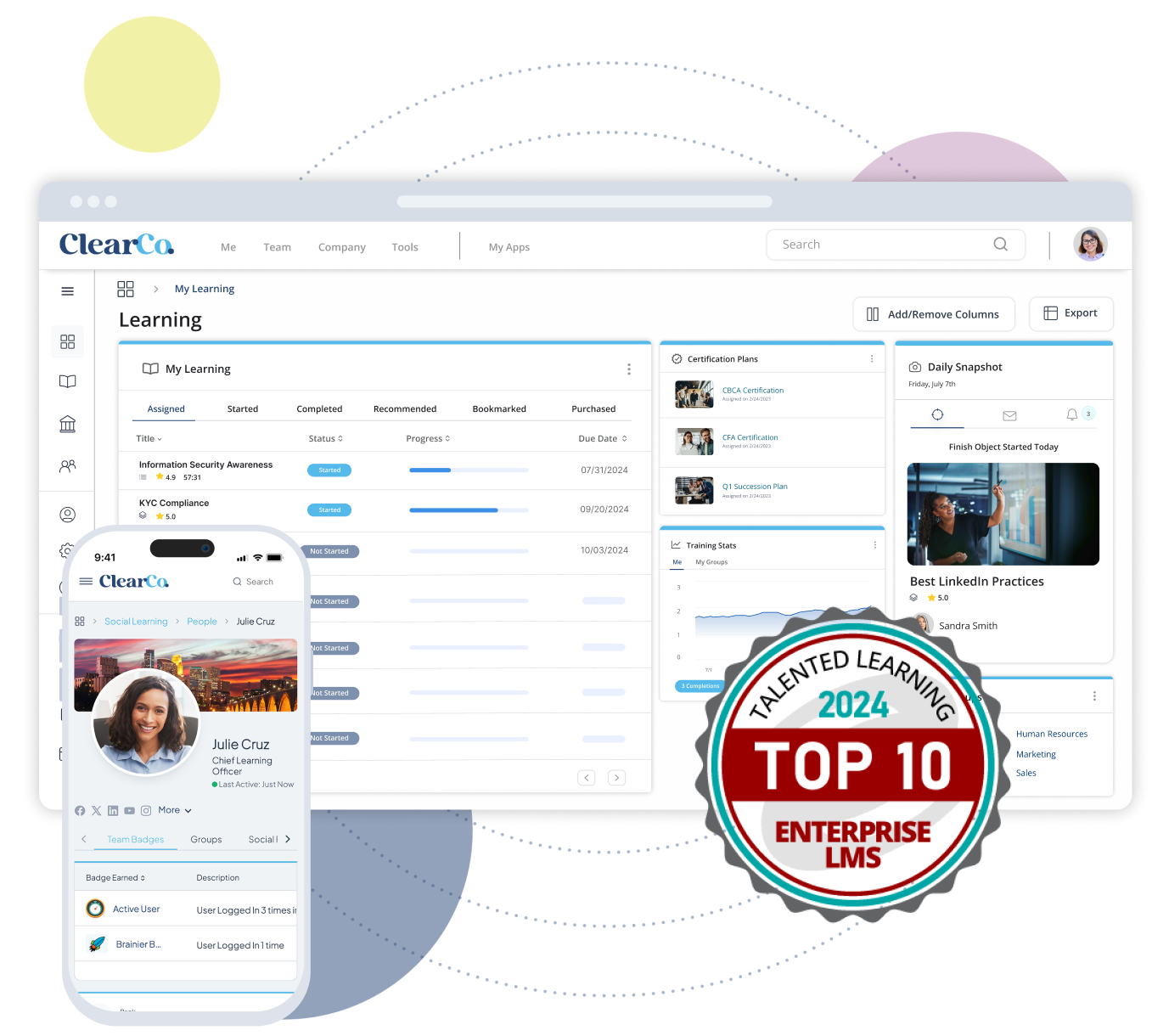If you’re having trouble finding employees with the right skills, you’re not alone. According to SHRM, it’s the number one challenge employers face. And it’s not getting better — by 2030, experts expect 65% of job skill requirements will change. That means now is a critical time to upskill and reskill your workforce.
Investing in employee learning and development (L&D) empowers your people to grow with your business. It also helps you ensure that your staff have the skills they need to be successful now and face future challenges with confidence.
What Is Upskilling?
Upskilling is when employees expand their existing skill sets so they can take on additional responsibilities, earn promotions, and grow in their areas of expertise. Upskilling programs are for employees with high leadership potential, specific career goals, and high performers. It’s also suited for teams whose functions shift when equipment, processes, or business priorities change.
Upskilling helps your people build new or deeper skills so they can take on more responsibility, progress in their career paths, and keep pace as roles evolve. It shows your employees you’re invested in them long-term, leading to stronger teams and higher retention. Upskilling also equips your organization to fill skill gaps from within, fast.
Examples of Employee Upskilling
Depending on your industry and employees’ roles, building a successful upskilling program can include many different strategies:
- Employee mentoring or coaching
- Workshops or training to grow soft skills
- Earning advanced degrees or certifications
- Online courses to learn new technologies or tools
- Job shadowing to gain hands-on experience from peers
- Attending industry conferences or webinars
- Rotating through different roles or teams to broaden skillsets
What Is Reskilling?
Reskilling is when employees learn new skills that may or may not be directly related to their current roles. This usually comes into play when certain jobs are becoming less relevant — think artificial intelligence (AI) — or when it’s tough to find people with the skills you need. It helps employees maintain relevant skills as the world of work changes and helps your company remain competitive.
Instead of letting valuable talent walk out the door, reskilling gives employees the opportunity to branch into something new. That could be learning skills “adjacent” to their role or making a bigger move into a different department where their strengths fill a gap.
Examples of Employee Reskilling
There are many types of training programs you can leverage to reskill employees:
- Technical skills training for a whole new position
- On-the-job learning or formal apprenticeships in another field
- Cross-training employees so they can pitch in on different projects
- Offering online courses or bootcamps for new skill sets
- Lateral moves to different teams or departments to fill an immediate need or develop new strengths
Upskilling vs. Reskilling
The main difference between upskilling and reskilling is the outcome — strengthening the skills employees already have versus equipping them with brand-new skills. Upskilling enables employees to advance by building on existing capabilities, which can lead to promotions or expanded responsibilities. For example, a warehouse associate could upskill by learning to operate advanced machinery so they can take on roles like machine operator or shift supervisor. This process supports career progression and helps you retain top talent with clear growth opportunities.
Reskilling, on the other hand, prepares employees for different roles within the company, often when existing positions are evolving or being phased out due to new technology or business needs. For instance, a customer service representative may reskill to become a software trainer, using their communication skills in a new context. Reskilling is especially valuable during times of change, like digital transformation or restructuring. It allows your employees to explore other career interests without leaving your company.
Upskilling and reskilling offer major benefits for employees and organizations alike. The benefits of continuous learning for your people include greater job security, adaptability, and confidence in their ability to take on new challenges. Meanwhile, the company benefits from a more agile and versatile workforce, reduced recruitment costs, and increased employee loyalty and engagement.
Make upskilling and reskilling a priority to ensure that your company stays competitive, employees feel valued, and everyone is prepared for what’s next.
Why Are Reskilling & Upskilling Important?
There are tons of overlapping benefits of upskilling and reskilling, and both are important components of talent management strategy. These are a few of the benefits of upskilling and reskilling:
- Helps avoid layoffs when roles evolve
- Increases employee productivity
- Fosters engagement and loyalty
- Saves on recruitment costs
- Strengthens your employer brand
- Keeps teams current with the most up-to-date AI skills
- Cultivates an agile, future-ready workforce
- Creates leaders who have a wealth of company knowledge
Access to development opportunities is one of the best ways to reduce turnover. When Gallup asked exiting employees what would have made them stay, two of the top five reasons — compensation and career advancement, plus feeling valued and moving forward — can be addressed through learning opportunities.
When you invest in employee growth, you’re creating a culture of learning and innovation. Employee development programs help your top performers advance, encourage motivated workers to stick around, and attract applicants with that same drive.
How AI Can Support Upskilling & Reskilling
AI is the future of work in more ways than one. AI upskilling is critical for your employees to stay current and competitive — and the powerful technology is transforming the way they learn and grow at work. An AI-powered platform, like a modern learning management system (LMS), is an unmatched data analysis sidekick for your HR and L&D teams. It can quickly synthesize data into actionable insights, helping you build smarter, more personalized learning experiences at scale.
With AI-powered LMS for upskilling and reskilling, you can spot skills gaps in real time and deliver targeted training that meets employees where they are. Algorithms analyze real performance data and recommend courses or resources tailored for each individual, moving away from the old, one-size-fits-all approach. These AI-driven solutions also make it easier and faster to build and update skills development programs, keeping your training relevant as goals and roles evolve.
AI-powered tools make it simple for your team to track learning progress, recognize achievements, and keep motivation high. By automating time-consuming tasks, AI frees up your people to focus on what matters most: developing new skills, problem-solving, and collaborating more effectively.
Support Continuous Learning With ClearCompany’s AI-Powered LMS
ClearCompany’s AI-powered LMS drives growth for employees, HR, and L&D teams. It offers personalized learning paths and course suggestions, connecting employees to the training they need. For HR and L&D, it reduces admin tasks, highlights skills gaps, and tracks progress — freeing time for strategic work. Your business gains a workforce that adapts quickly, learns continuously, and stays competitive.
Ready to see how AI can transform learning at your company? Request a demo to learn more about ClearCompany’s AI-powered LMS today.



